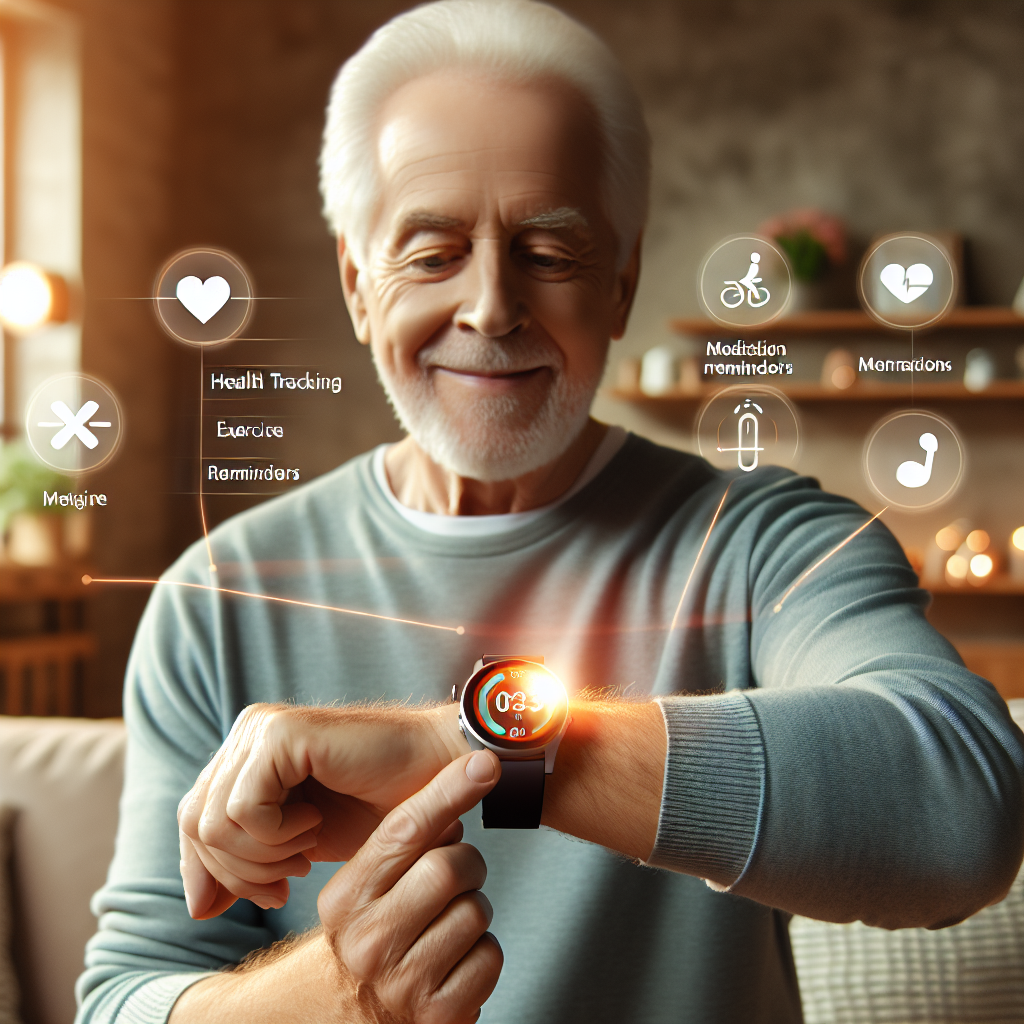Evolution of Fitness Technology for Seniors
Remember when pedometers were the coolest fitness gadgets around? Fast forward to today, and we’re witnessing a revolution in how seniors approach health and wellness, thanks to some incredible advances in wearable technology. These smart devices aren’t just for tech-savvy millennials anymore—they’re becoming trusted companions for older adults embracing positive aging and active retirement life.
Wearable fitness technology for seniors has evolved far beyond simple step counters. Today’s smartwatches and fitness trackers serve as personal health coaches that slip right onto your wrist, providing round-the-clock insights into everything from heart rate and sleep quality to daily activity levels. For those planning for retirement or already enjoying their golden years, these devices offer a gentle nudge toward healthier habits while aging in place.
“It’s like having a wellness expert with you 24/7,” says Martha, 72, who started using a fitness tracker after her doctor recommended increasing her daily activity. “My watch reminds me when I’ve been sitting too long and celebrates with me when I reach my goals. It’s changed how I approach each day.”
Wearable Tech: A Health Companion in Retirement Life
What makes these devices particularly valuable for retirement life is their ability to track metrics specifically relevant to seniors’ health concerns. From monitoring heart rhythms to analyzing sleep patterns that can improve sleep quality, today’s wearables offer unprecedented insights that empower older adults to take charge of their health journey while maintaining independence at home—perfectly aligning with the growing movement toward active living and aging in place.
The Surprising Benefits of Fitness Tech for Seniors
Fitness for Seniors: A Game-Changer
When it comes to fitness for seniors, wearable technology is proving to be a game-changer in ways many never expected. Research consistently shows that seniors who use fitness trackers and smartwatches experience significant improvements in both physical and mental well-being during their retirement life.
One of the most remarkable benefits is how these devices motivate consistent physical activity. “Before I got my fitness watch, I thought I was fairly active,” says Robert, 68, who’s been using a smartwatch for the past year. “Turns out I was only walking about 2,000 steps a day. Now I’m averaging 7,500 and feel better than I have in years!” This kind of accountability helps seniors establish healthy routines that support aging in place successfully.
These wearables don’t just count steps—they’re comprehensive health companions that provide valuable data to help plan for retirement health needs. Many seniors report that seeing their heart rate, sleep patterns, and activity levels visualized helps them make better lifestyle choices. The technology serves as both a motivator and a monitor, enabling older adults to set achievable fitness goals tailored to their abilities.
The mental health benefits are equally impressive. Studies examining mFit technology show a strong positive association between regular use of fitness wearables and psychological well-being in older adults. By tracking progress and celebrating achievements, these devices provide emotional boosts that combat isolation and depression—common challenges when aging in place.
Take Elaine, 74, who credits her fitness tracker with helping her recover after knee surgery: “Following my therapy exercises through the guided programs on my watch made all the difference. I can now keep up with my grandchildren again, which means everything to me.” Stories like Elaine’s highlight how fitness tech supports not just physical recovery but also the emotional well-being that comes with maintaining independence.
The social aspects shouldn’t be overlooked either. Many fitness apps connected to wearables offer community features where seniors can participate in friendly competitions or share achievements. This creates valuable social connections and accountability partners, even for those with limited mobility. “My walking group started as strangers on an app,” shares William, 70. “Now we meet twice weekly at the park. The technology brought us together, but the friendships keep us coming back.”
For those exploring fitness tips for their retirement years, gentle activities like yoga and tai chi have proven especially beneficial—and many wearables now offer guided programs specifically designed for these exercises. The technological guidance ensures proper form and appropriate intensity, making these traditional practices more accessible to seniors of various fitness levels.
Cardiovascular health improvements are among the most documented benefits of using fitness technology. Regular monitoring of heart rate during activity helps seniors exercise safely while gradually building stamina. Many users report improved blood pressure readings after several months of guided fitness tech use, contributing to greater overall health and reduced medication dependence.
Challenges and Considerations of Fitness Tech for Seniors
While these fitness devices offer impressive benefits for seniors embracing active living, it’s important to acknowledge some challenges that come with the technology. Like any tool, wearables have limitations that seniors and their caregivers should consider when incorporating them into a positive aging strategy.
One concern is the accuracy of tracking metrics for older adults. Recent studies involving seniors aged 75 and older have shown that consumer fitness trackers don’t always deliver consistent data. For example, step counts and calorie measurements can be less reliable for those with slower walking speeds or irregular gaits—common characteristics among some seniors. This variability matters because tracking accuracy directly impacts how useful these devices are for monitoring health improvements during retirement life.
“My doctor pointed out that my tracker wasn’t accurately measuring my activity because of my arthritis-affected walking pattern,” explains Howard, 78. “We adjusted my goals accordingly rather than relying solely on the numbers.” This kind of thoughtful approach helps seniors benefit from the technology while acknowledging its limitations.
User-friendliness presents another hurdle for many older adults planning for retirement health management. Complex interfaces, tiny buttons, or complicated setup procedures can create frustration rather than motivation. Many seniors report abandoning fitness tech when it becomes too intrusive or difficult to operate.
“I was overwhelmed at first by all the features and notifications,” admits Doris, 69. “But my granddaughter helped me customize my settings to focus just on what I needed. Now it’s much more manageable and actually helpful for tracking my daily walks.”
The good news is that developers are increasingly recognizing these challenges. More companies are designing fitness technology specifically with seniors in mind, featuring larger displays, simplified interfaces, and longer battery life. These age-friendly adaptations make fitness tech more accessible for those aging in place and wishing to maintain independence.
Despite these considerations, fitness wearables remain valuable allies in supporting healthy, independent aging. When chosen thoughtfully and used appropriately, these devices can significantly enhance quality of life during retirement years. They provide gentle technological support that complements traditional approaches to senior fitness without replacing the human element of care and connection.
For seniors looking to improve sleep quality, manage chronic conditions, or simply maintain an active lifestyle at home, the right fitness technology offers a blend of motivation, monitoring, and meaningful feedback. The key is finding devices that feel natural and non-intrusive while providing genuinely useful information that supports individual health goals.
Future of Fitness Technology: Innovation and Simplicity
As we look toward the future of fitness for seniors, the most promising technologies will be those that strike a balance between innovation and simplicity—offering powerful health insights through interfaces that seniors can easily navigate and trust. When matched with proper support and realistic expectations, these wearable companions can help transform retirement living into a time of continued growth, activity, and well-deserved independence.
In the end, the goal isn’t technology for technology’s sake, but rather finding tools that genuinely empower seniors to embrace positive aging on their own terms—right at home, where they’re most comfortable. And that’s something worth stepping up for, one fitness-tracked day at a time.

